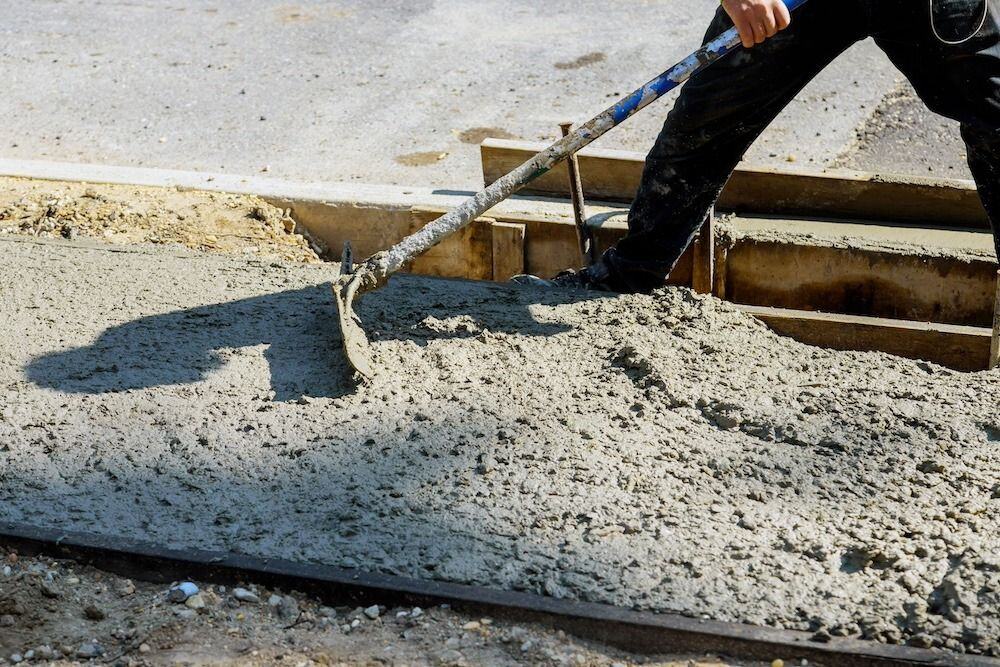
Learn what makes concrete such a strong, versatile material.
Concrete is all around us, from the foundations of the homes we live in to the sidewalks where we walk our dogs.
But what makes concrete so great? Why is it everywhere?
Let's dive into what concrete is made of and why it’s such an essential building material. We’ll also provide some tips to help you keep your concrete in good shape for as long as possible.
Cement vs. Concrete: What’s the Difference?
First, let’s clarify a common misconception: cement and concrete are not the same things.
Cement is actually an ingredient of concrete. Think of cement as the eggs in an omelet – essential, but not the whole dish.
Cement acts as a binding agent, hardening and binding the other components of concrete together.
Tech Talk: Cement is manufactured through a chemical combination of eight ingredients: lime, silica, alumina, magnesia, sulfur trioxide, alkaline, iron oxide, and calcium sulfate.
What Is Concrete Made Of?
Concrete is composed of three main ingredients:
-
Portland Cement (10-15%)
This is the generic name for the type of cement used in almost all concrete. When mixed with water, it forms a paste that binds the aggregates together.
-
Water (15-20%)
Water activates the cement, allowing it to harden and bind the aggregates.
-
Aggregates (65-75%)
These are typically sand, gravel, or crushed stone that provide bulk and strength to the concrete.
The Importance of Proper Concrete Proportions
The key to creating strong concrete is getting the proportions of these ingredients just right.
Too little cement won’t fill the voids between aggregates, while too much cement can lead to cracking.
A well-proportioned mix must be workable enough to pour but also strong and durable once hardened.
Concrete Reinforcements
Concrete is often reinforced with fibers, welded wire mesh, or steel rebar to enhance its strength and durability.
Fibers
Fibers can be added to the concrete mixture and are distributed in all directions through the mix. As concrete cracks begin to appear, they intersect with the fibers, which block their growth.
Wire Mesh
Wire mesh holds the concrete together on a larger scale, stabilizing the structure and maintaining its integrity if it begins to crack.
Steel Rebar
Rebar is short for “reinforcing bar” and also adds strength to the concrete from within, but does so in a different way than wire mesh.
Decorative Concrete
Beyond its functional uses, concrete can also be decorative. By adding color additives or using concrete stencils or stamping, you can create aesthetically pleasing designs.
However, decorative concrete requires precise knowledge of how additives affect the mix to ensure the desired results. For example, if you’re looking for a stamped concrete finish, the mix must be designed to hold the print while curing.
Repair and Maintenance Tips for Concrete
Concrete is a strong material, but it breaks down over time. The good news is that it can be regularly maintained and repaired when needed, helping to extend its lifespan.
Here are some tips to keep your concrete in good shape:
-
Routine Inspection
Regularly check for cracks or other signs of wear and tear. Early detection and action can prevent minor issues from becoming major problems.
Related Resource: Seasonal Concrete Maintenance Calendar
-
Proper Cleaning
Keep your concrete surfaces clean to prevent the buildup of dirt and grime, which can lead to permanent stains and deterioration over time.
-
Seal Cracks Promptly
If you notice cracks beginning to form, caulk them ASAP to prevent water from seeping in and causing further cracking or causing the slab to settle.
-
Fill Voids Under Slabs
As the soil under your concrete settles or erodes away, the slabs may settle along with it. Filling the empty spaces below the slabs will lift them up, stabilize them, and help prevent cracks.
Take Care of Your Concrete
Concrete is a remarkable material that, when properly maintained, can last for decades.
By taking proactive steps to care for it, you can help ensure the longevity and durability of your concrete.
Here at A-1 Concrete Leveling, we’ve been helping home and business owners alike care for their concrete for over 30 years.
Download our Concrete Repair and Maintenance Guide to learn more about what you can do to keep your concrete looking and functioning how it should.
Proper CleaningKeep your concrete surfaces clean to prevent the buildup of dirt and grime, which can lead to permanent stains and deterioration over time.
Seal Cracks Promptly
If you notice cracks beginning to form, caulk them promptly to prevent water from seeping in and causing further cracking or causing the slab to settle.
Fill Voids Under Slabs
As the soil under your concrete settles or erodes away, the slabs may settle along with it. Filling the empty spaces below the slabs will lift them up, stabilize them, and help prevent cracks.
Sarah Etler joined A-1 Concrete Leveling after receiving her Bachelor of Arts degree in English from Northern Kentucky University. As A-1's Content Marketing Manager, she works closely with industry experts to produce content that will best answer questions related to concrete repair and maintenance practices. Sarah loves living a life full of discovery and is excited every day to see what new things she can learn and share with those around her.
Topics: